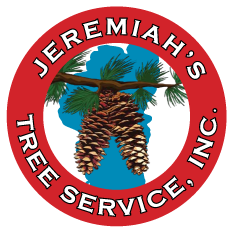Are Your Trees Struggling? How to Spot Drought Stress in the Tahoe Basin — and Why It Matters
The Sierra sun is intense, and by late summer, it can leave even the toughest Tahoe trees gasping for water. If you’re seeing signs of leaf scorch, early drop, or sparse canopies, it’s not just summer fatigue—it could be drought stress, and it can escalate quickly.
Since 1985, we’ve been helping local property owners care for trees in this unique alpine climate. Whether you’re here full time or just returning for the summer, here’s what you need to know.
🔎 What Drought Stress Looks Like in Tahoe Trees
Trees don’t show stress like people do. Often, the most important clues are subtle—until they’re not.
Common symptoms include:
- Leaves or needles turning brown at the edges (“leaf scorch”)
- Curling, wilting, or drooping foliage
- Early leaf or needle drop, especially on inner branches
- Thinning canopy — you may see more sky than usual through the tree
- Dead twigs or branch tips
- Bark cracking, or oozing sap in conifers
- Reduced or stunted new growth
Pro Tip: In pines and firs, drought stress often appears high in the crown where it’s hardest to see—especially from the ground.
🌲 Which Tahoe Trees Are Most at Risk?
The Lake Tahoe Basin is home to a beautiful mix of native conifers and ornamentals. All are affected by drought, but some are more susceptible than others:
Common Local Species:
- Jeffrey Pine – Often drought-tolerant but highly vulnerable to bark beetles when stressed
- White Fir – Can decline quickly without deep watering during prolonged heat
- Lodgepole Pine – Sensitive to shallow soils and moisture loss
- Quaking Aspen – Needs regular moisture and often shows stress early
- Mountain Hemlock – High-elevation species with limited drought resilience
Even hardy trees can succumb to summer stress when water is scarce, especially in exposed areas or after construction near the root zone.
🧪 What Makes Drought Stress Worse in Tahoe
The Basin has several unique conditions that stack the odds against your trees during hot, dry months:
- Shallow, decomposed granite soils dry out fast and hold little moisture
- High elevation sun exposure intensifies transpiration (water loss through leaves)
- Cool nights can mislead homeowners into thinking trees aren’t thirsty
- Sprinkler systems often focus on lawns—not trees—and don’t reach root zones
- Compacted soil and construction disturbance limit root access to water
And don’t forget: rain events are infrequent and rarely soak deeply enough to benefit established trees.
🔥 Drought Stress Increases Fire Risk, Too
Dry, weakened trees aren’t just unhealthy—they’re a hazard.
Drought-stressed trees are more likely to:
- Drop limbs during wind or weight events
- Host wood-boring insects, like bark beetles or Western pine beetle
- Die standing, becoming fuel for wildfires
That’s where defensible space comes in. Creating and maintaining a well-spaced, hydrated, and trimmed tree canopy is critical for both tree health and fire safety. A single dead or dry tree too close to a structure can ignite or spread fire rapidly.
🛠️ What You Can Do Right Now
If your trees are showing signs of stress, or if you’re unsure what’s going on, here’s what we recommend:
✅ Schedule a drought stress inspection
We’ll assess your trees and look for subtle signs most homeowners miss.
✅ Consider bio hydration treatments
This deep-soaking method recharges moisture at the root level—where it’s needed most.
✅ Review your watering schedule
Most trees benefit from deep, infrequent watering, especially early in the day.
✅ Add mulch around root zones
A few inches of organic mulch helps retain soil moisture and regulate temperature.
✅ Update your defensible space plan
Clear dead wood, prune up low limbs, and space out crowns to limit fire risk.
📞 Your Trees Don’t Have to Suffer Through Summer Alone
If you’re noticing changes in your trees—or haven’t had them checked this season—it’s time to act. Drought stress isn’t always obvious, but it can lead to long-term decline, costly removal, or increased fire risk if left untreated.
Let’s catch it early.
Contact us today at (530) 581-1945 for a free tree health consultation.

